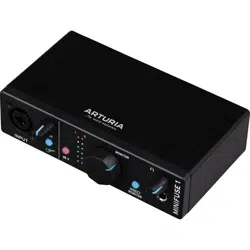Loading ...
Loading ...
Loading ...

8.2. Sample Rate
In the digital realm, analog audio signals are represented by discrete points in time, or
"samples". When played back through a digital-to-analog converter, like those in computer
soundcards, the digital samples are reproduced into a smooth audio signal. You can think
of it like frames in a movie - each frame is a still snapshot, but when played back at a fast
enough rate (24+ frames per second) our eyes perceive the sequence of static frames as
continuous motion.
The sampling rate describes how many digital sampling points, or "frames", are used to
approximate the audio signal over time. This also determines the highest frequency that can
be captured or reproduced by the digital representation. The Nyquist–Shannon sampling
theorem states that this is equal to 1/2 of the sample rate so, for example, the highest sound
frequency that can be reproduced by a sample rate of 48kHz is 24kHz.
The average range of human hearing is 20 to 20,000Hz (or 20kHz). For most audio
applications we recommend using a sample rate of 44.1kHz or 48kHz. Sample rate of CD-
quality audio is 44.1kHz. Higher sample rates will result in significantly higher CPU usage,
without much benefit to be gained in most circumstances.
Higher sample rates like 96kHz
can
be useful in sound design applications where you would like
flexibility to apply extreme pitch adjustments to the recording. A sound recorded at 96kHz and played
at half-speed would still be able to reproduce frequencies up to 24kHz, while the same sound recorded
at 48kHz and played at half speed will only be able to reproduce frequencies up to 12kHz.
Arturia - User Manual MiniFuse 1 - A QUICK PRIMER ON DIGITAL AUDIO 29
Loading ...
Loading ...
Loading ...
